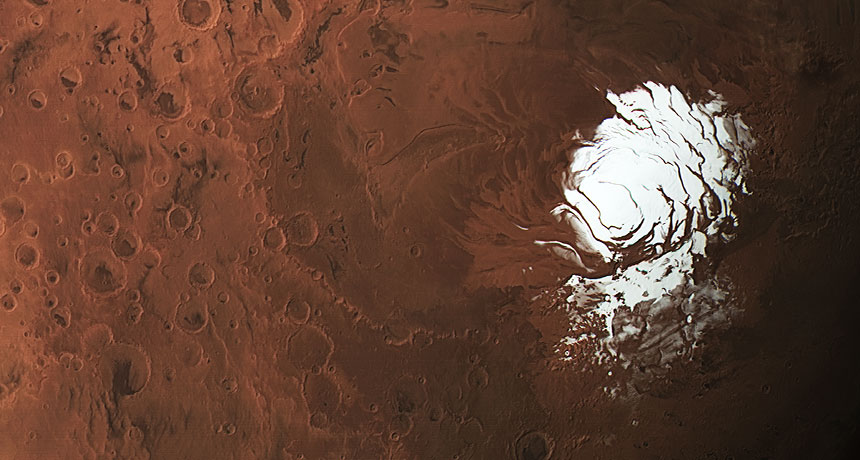What does Mars’ lake mean for the search for life on the Red Planet?
The water body, if confirmed, could potentially harbor microbes

WHAT LURKS BENEATH Scientists think they’ve spotted a lake hidden under ice (white) near Mars’ south pole, shown in an image from ESA’s Mars Express spacecraft.
ESA, DLR, FU Berlin (CC BY-SA 3.0 IGO)